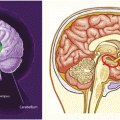© Springer Science+Business Media New York 2015
Verna Benner Carson, Katherine Johnson Vanderhorst and Harold G. KoenigCare Giving for Alzheimer’s Disease10.1007/978-1-4939-2407-3_99. Whispering Hope and Faith: Still, Small Voices for the Alzheimer’s Journey
(1)
C&V Care Specialists, Inc., Fallston, Maryland, USA
(2)
C&V Care Specialists, Inc., Williamsville, New York, USA
(3)
Dept. of Psychiatry Behavioral Science, Duke University Medical Center, Durham, North Carolina, USA
Keywords
SpiritualityRole of churchTempleMosqueFaithPrayingHymnsVisitation from members of faith traditionFaith community as a supportSpiritual needs continue till end/deathProfound memory loss is commonly referred to as “loss of self.” However, it never means “loss of soul.” People with Alzheimer’s disease (AD) continue to experience spiritual needs, as do their caregivers. For many people, religious or spiritual experiences are part of their long-term memories. These memories are accessible to the person with AD until very late in the disease (Ewing 2005; Killick 2006). Ancient memories of a parent praying with a child or singing hymns to comfort may date back to infancy and so are preserved in the brain well after verbal communication has been destroyed along with short-term memory. Religious music continues to be one of the most powerful interventions for reaching those in the late stages of AD. Music is stored in the brain through a complex neural network that preserves it when other areas of the brain are destroyed through AD. This chapter discusses the many ways that spiritual needs can be met through music, literature, touch, prayer, candles, a menorah, a rosary or Bible, the smell of incense, wine, or fresh bread (Beuscher and Beck 2008).
AD alters every dimension of life including the spiritual. The individual’s ability to communicate what is spiritually meaningful begins to diminish along with all of the other cognitive functions. However, this does not mean that caregivers should ignore the issue of spirituality and/or assume that the person with dementia is unable to respond to the spiritual. As a caregiver, it is easy to experience a sense of futility when working with a loved one or a patient in a facility. It is understandable that caregivers might conclude that it would be futile to even attempt to meet spiritual needs because the person under their care will not understand. Nothing could be further from the truth. Many individuals were exposed to religious beliefs, experiences, and practices beginning in infancy (Ennis and Kazer 2013). Perhaps family members said nighttime prayers during this time—a prayer as simple as:
Now I lay me down to sleep, I pray the Lord my soul to keep. If I should die before I wake, I pray the Lord my soul to take.
Perhaps family members sang religious hymns to the child, or perhaps he or she was exposed to a religious rite such as baptism and later to first communion and confirmation or perhaps the child’s parents dedicated him or her to God. Perhaps the child experienced a bar mitzvah or learned prayers in Hebrew, Farsi, or another language. These early experiences may be imbedded deep within the brain in the individual’s long-term memory. The person may not remember the name of their most recent clergy person or what faith tradition they belonged to, but these lapses do not guarantee that the person has forgotten who God is. Individuals with AD may still remember God, and will respond to prayer and hymns. When the opportunity to actively or passively participate in prayer and singing religious music is offered, many of those with AD will join in with these activities (Gataric et al. 2010).
A video clip, embedded within a larger video entitled Memory Bridge shows a vignette of Naomi Feil interacting with Gladys Wilson who has not spoken in 2 years. (www.memorybridge.org/ Accessed 4 May 2014.)
In the video, Naomi, a teacher and consultant on the care of those with AD, moves very close to Gladys and begins to gently touch Gladys’s cheeks—the way a mother would stroke the cheeks of a baby. Naomi draws upon Gladys’s religious history and uses old church hymns to connect with Gladys. Initially, Naomi, while continuing to stroke Gladys’s cheeks, sings the children’s hymn, Jesus Loves Me, this I know, for the Bible tells me so. Although Gladys does not join in the singing, she opens her eyes and focuses intently on Naomi’s eyes; Gladys also begins to clap her hands on the arms of her chair as well as on Naomi’s arms! Although Gladys does not verbally respond, her eyes remain fixed on Naomi’s face. Naomi then asks Gladys if she will join Naomi in another song. Naomi begins to sing He’s Got the Whole World in His Hands and when she gets to the second verse, Gladys begins to sing along! It is an incredibly powerful moment when at the end of the song, Naomi asks Gladys if she feels safe and warm, with Jesus and Naomi—to which Gladys responds yes! This short video clip is a powerful example of how religious music can reach down into the soul of a person and bring forth a response even from someone like Gladys who appears nonverbal and uncommunicative.
The religious beliefs, practices, and expressions of faith that are cradled in long-term memory can be tapped into long after short-term memories are gone, even during the last stages of AD. Profound memory loss is commonly referred to as “loss of self.” However, it never means “loss of soul.” The soul remains and caregivers can get there from where they are (Mooney 2004; Snyder 2003).
What are the implications of this knowledge for the caregiver? Church, synagogue, temple , or mosque are the formal places where people go to pray and to honor God regardless of religious tradition. People look to their faith to be accepted, spiritually challenged, and fed, and to receive answers and direction during the most difficult times of life. How are these needs met when the caregiver can no longer access the religious facility? Should family members approach the pastor, rabbi, imam, or temple leader to request that an announcement be made to everyone, including those members of the congregation with special needs, that they are welcome? Should members of a congregation expect that their faith community be educated from the pulpit about the special needs of members? Should the person with AD or other dementia still be transported to church, synagogue, or temple and be allowed to participate in the religious service in whatever manner is possible for the individual? What if the person with dementia, exhibits inappropriate behaviors in the religious setting? How is it possible for the caregiver to respond to these behaviors and still focus on the religious service? These are all questions that caregivers as well as religious leaders must confront. Considering the potential onslaught of those with AD as the baby-boomer generation races into “old age,” it would behoove spiritual leaders to inform the congregation that not only are they a welcoming community to those who are cognitively intact but also to those who are cognitively impaired. The last thing that should happen is that family caregivers are “cut off” from spiritual comfort because their spiritual community does not accept or understand the special needs of those with AD (Grollman 2004). But even if the religious community threw open their doors to welcome those with AD, the issues that surround dealing with disruptive behaviors still remain (Stolley et al. 1999).
Stay updated, free articles. Join our Telegram channel

Full access? Get Clinical Tree





